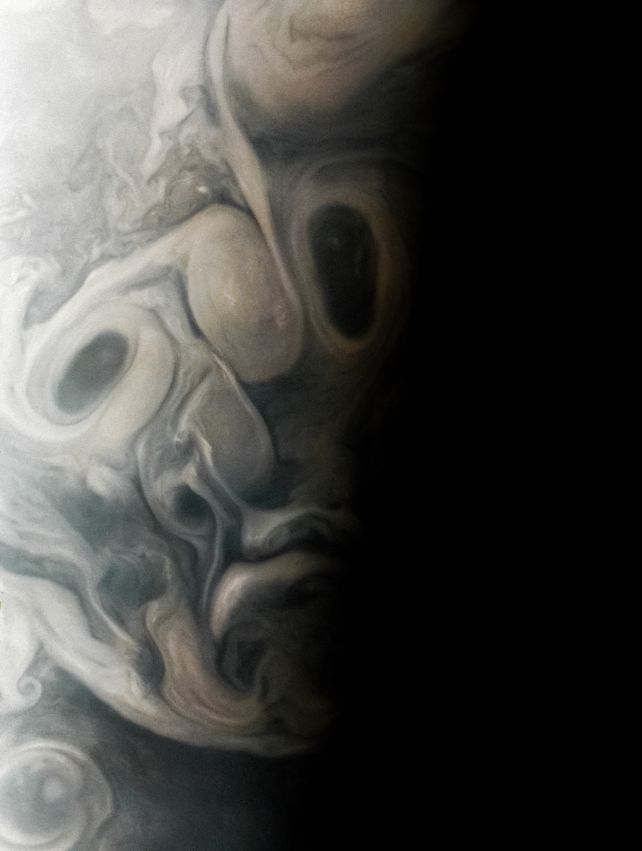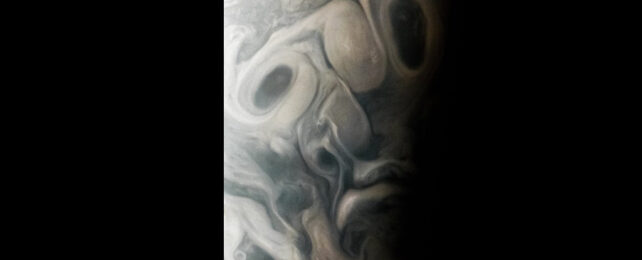Jupiter may be a roiling, uninhabitable ball of tempestuous gas, but that doesn't mean it can't give us the screaming willies from time to time.
Even aside from its mind-boggling size, and storms that could easily engulf our entire world, the cloud formations that mix and swirl across the planet can take some unnerving forms. And one captured by NASA's Juno probe in early September is almost reminiscent of a face filled with angst and dread, perhaps evocative of Edvard Munch.
As it made its 54th close flyby, or perijove, on 7 September 2023, Juno snapped a region in the far north known as Jet N7.
Jets on Jupiter are the wind streams that separate the planet's stripes, the pale belts and the brown-red zones. The jets penetrate deep into the Jovian atmosphere, and can generate some complicated and fascinating cloud patterns in the cloud tops.
Juno's perijove took it within about 7,700 kilometers (4,800 miles) above the cloud tops of Jupiter, just in time to catch the terminator over Jet N7.
This is the thin, twilit line that divides night and day, and it's extremely useful for science. That's because the light from the Sun hits obliquely, lengthening shadows, like the way shadows on Earth lengthen at dusk.

This makes features more visible in the cloud tops of Jupiter, like seeing texture in an oil painting when you shine a light on it from the side. Scientists can study these features to try and figure out the dynamics of Jupiter's strange, wild storms.
There's a lot we still don't know about the largest planet in the Solar System, and how it operates, but the technology we point in its direction is slowly uncovering its secrets.
Juno is a big part of that; since its first perijove in July 2016, it has swung in close to Jupiter every month or two, each time giving us new glimpses of the planet's spectacular clouds. And, because we're human, and prone to visual pattern recognition known as pareidolia that can lead to the identification of shapes and features, we sometimes spot recognizable features in the Jovian clouds.
Sometimes this is animals. But, arguably, the most powerful form of pareidolia is face pareidolia. We can see faces in a smudge of gunk on bathroom tiles, or the shape of foliage in a distant tree. So strong is this effect that we can even ascribe emotion, age, and gender to these illusory faces.
So finding a face in the clouds of Jupiter is not surprising. It's not even surprising that we can determine how we think it might feel. The surprising thing is that it doesn't happen more often.
Maybe we just need to be looking a bit more closely.
You can download a full-size version of the image on the NASA website, just in case you need a new phone background for Halloween.
